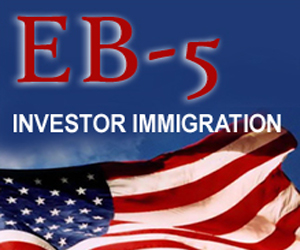 Entrepreneur Sandra Dyche has seen firsthand how foreign investors have used the EB-5 program to accelerate job creation for out-of-work Americans. Below, Sandra Dyche describes the EB-5 program and its benefits for both foreign investors and unemployed workers.
Entrepreneur Sandra Dyche has seen firsthand how foreign investors have used the EB-5 program to accelerate job creation for out-of-work Americans. Below, Sandra Dyche describes the EB-5 program and its benefits for both foreign investors and unemployed workers.
Interviewing Experts: What is the EB-5 program?
Sandra Dyche: EB-5 means “employment-based fifth preference.” An employment-based fifth preference is another term for an immigrant investor visa mandates that new employment positions be created for U.S. workers.
Interviewing Experts: When was this program started?
Sandra Dyche: In 1990, Congress began the EB-5 program in order to create more jobs and enhance economic growth. This is accomplished through capital investments from foreign investors.
Interviewing Experts: Who oversees it?
Sandra Dyche: Homeland Security oversees the EB-5 program, which is administered by the U.S. Immigration and Citizenship Services (USCIS).
Interviewing Experts: How does the EB-5 program work?
Sandra Dyche: The EB-5 program is the most efficient method for foreign investors to earn a U.S. green card, which also extends to their immediate family. The program authorizes many green cards each year, with a limit of 10,000.
Interviewing Experts: How does a foreign investor qualify?
Sandra Dyche: Foreign individuals who invest $1,000,000 are eligible as long as the investment comes from lawful source and can be vetted. The amount is reduced to $500,000 if the proposed project is located in a qualifying location called a targeted employment area (TEA). TEA is an area that has an unemployment rate at least 150 percent above the national average. For every EB-5 investment, the requirement is to develop at least 10 jobs for workers in the U.S.
Interviewing Experts: What else do EB-5 investors need to know?
Sandra Dyche: The Regional Center program, which was instituted in 1992, allows EB-5 investors to have an advantage in this process. In the Regional Center program, investors can count direct jobs as well as induced and indirect jobs.
Interviewing Experts: What is a Regional Center?
Sandra Dyche: A Regional Center is an entity, either public or private, that is formed to induce economic growth in a specific area. To be considered as a Regional Center, an entity must fill out an application and receive approval from USCIS. The approval only covers specific geographic regions and established industry codes.
Interviewing Experts: Has the EB-5 program been successful?
Sandra Dyche: At first, the Regional Center program was rarely used. However, nearly 300 Regional Centers have been approved and now being operational in the United States, most of them located in major markets. This is a considerable improvement from approximately 30 Regional Centers that were approved as of 2007.